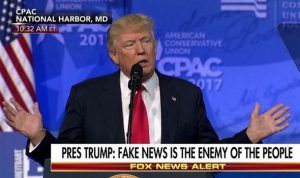Robert C. Morgan at artcritical:
 For Chinatown residents, Ji’s paintings may serve as an allegory of what is happening elsewhere; but for Chinese farmers and their families it is reality, one they are forced to confront as an everyday occurrence. In rural China today , extreme poverty has become a fact of life. This has much to do with the fields formerly used for growing crops that have been flooded to produce electrical power or polluted to the extent that farmers no longer have land to work and water to fish and drink, thus leaving their families in a desperate state constantly fighting for survival. Their fields are now dumping grounds for antiquated computer parts that poison the furrows they once tilled.
For Chinatown residents, Ji’s paintings may serve as an allegory of what is happening elsewhere; but for Chinese farmers and their families it is reality, one they are forced to confront as an everyday occurrence. In rural China today , extreme poverty has become a fact of life. This has much to do with the fields formerly used for growing crops that have been flooded to produce electrical power or polluted to the extent that farmers no longer have land to work and water to fish and drink, thus leaving their families in a desperate state constantly fighting for survival. Their fields are now dumping grounds for antiquated computer parts that poison the furrows they once tilled.
These harrowing conditions are at the source of what Ji paints and through the act of painting in a style reminiscent of the Southern Sung Dynasty (1127 – 1279), the artist reminds himself of the China that few urban residents have actually seen.
more here.

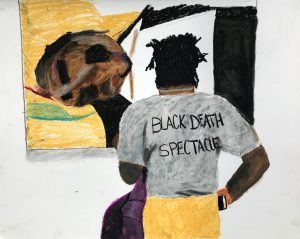 The “urgent recommendation” by Black and her cosignatories that the offending artwork should be destroyed stemmed from a desire to prevent the image of black suffering and death from becoming another commodity; as such, it led to vigorous pushback. Those who rejected the protesters’ positions—people ranging from respected art critics, artists, and art historians, to those who had little interest in art per se but objected to complaints by “snowflake” social-justice warriors on principle—largely framed their counterarguments in terms of free speech, artistic freedom, and censorship. (If we measure the strength of an art-world controversy by how deeply it penetrated into public consciousness, I’d say Whoopi Goldberg telling the protesters they needed to “grow up” on The View ranks this one pretty high. Zadie Smith chalking the controversy up to the “cheap” binary of us vs. them politics in Harper’s Magazine and Coco Fusco writing off not only Hannah Black but the historical black arts movement in Hyperallergic were also telling markers.)
The “urgent recommendation” by Black and her cosignatories that the offending artwork should be destroyed stemmed from a desire to prevent the image of black suffering and death from becoming another commodity; as such, it led to vigorous pushback. Those who rejected the protesters’ positions—people ranging from respected art critics, artists, and art historians, to those who had little interest in art per se but objected to complaints by “snowflake” social-justice warriors on principle—largely framed their counterarguments in terms of free speech, artistic freedom, and censorship. (If we measure the strength of an art-world controversy by how deeply it penetrated into public consciousness, I’d say Whoopi Goldberg telling the protesters they needed to “grow up” on The View ranks this one pretty high. Zadie Smith chalking the controversy up to the “cheap” binary of us vs. them politics in Harper’s Magazine and Coco Fusco writing off not only Hannah Black but the historical black arts movement in Hyperallergic were also telling markers.) Christian Frock in Hyperallergic:
Christian Frock in Hyperallergic: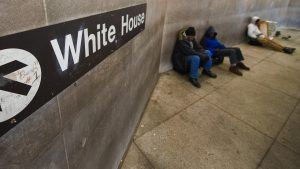 Lance Taylor over at INET:
Lance Taylor over at INET: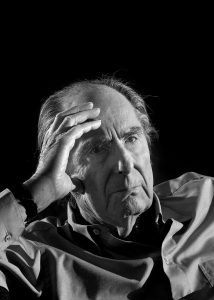 Philip Roth, the prolific, protean, and often blackly comic novelist who was a pre-eminent figure in 20th century literature, died on Tuesday night at a hospital in Manhattan. He was 85.
Philip Roth, the prolific, protean, and often blackly comic novelist who was a pre-eminent figure in 20th century literature, died on Tuesday night at a hospital in Manhattan. He was 85. Isaac Butler has a new podcast over at Slate on politics and Shakespeare. The first episode is on Julius Caesar:
Isaac Butler has a new podcast over at Slate on politics and Shakespeare. The first episode is on Julius Caesar: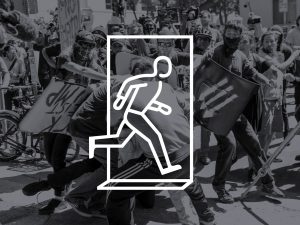 Sam Harris, one
Sam Harris, one  James Priest couldn’t make sense of it. He was examining the DNA of a desperately ill baby, searching for a genetic mutation that threatened to stop her heart. But the results looked as if they had come from two different infants.
James Priest couldn’t make sense of it. He was examining the DNA of a desperately ill baby, searching for a genetic mutation that threatened to stop her heart. But the results looked as if they had come from two different infants. The nation’s religious makeup has shifted dramatically in the past 15 years, with a sharp drop in the number of Americans who say they’re members of a
The nation’s religious makeup has shifted dramatically in the past 15 years, with a sharp drop in the number of Americans who say they’re members of a  In 1920, the night before Easter Sunday, Otto Loewi woke up,
In 1920, the night before Easter Sunday, Otto Loewi woke up, 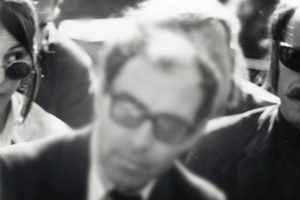 Godard has a way of spinning every question into a cosmic tangent. A Brazilian journalist asked him about his approach to sound. A technical question. Godard replied that one his original titles for the film was An Attempt at Blue. “There are things that text and language cannot convey,” he added. “The voice is not the same as speech. And speech is not necessarily language. When it came to sound, the aim was to separate the sound from the image. We didn’t want it to be just an accompaniment. We wanted a true dialogue between the sound and the images.” Alluding to cinema’s original pioneers, he added, “I believe that the Lumière brothers, when they filmed the arrival of the train in the station, were thinking of all this.” Without a pause, he then jumped straight to French impressionism. “What the impressionists have brought into art is light. Then Cézanne brought colour, and colour has something to do with speech—even if we are talking about Heidegger here. The sound should not be too close to the images for me. The perfect screening should be in a café instead of on a TV screen.
Godard has a way of spinning every question into a cosmic tangent. A Brazilian journalist asked him about his approach to sound. A technical question. Godard replied that one his original titles for the film was An Attempt at Blue. “There are things that text and language cannot convey,” he added. “The voice is not the same as speech. And speech is not necessarily language. When it came to sound, the aim was to separate the sound from the image. We didn’t want it to be just an accompaniment. We wanted a true dialogue between the sound and the images.” Alluding to cinema’s original pioneers, he added, “I believe that the Lumière brothers, when they filmed the arrival of the train in the station, were thinking of all this.” Without a pause, he then jumped straight to French impressionism. “What the impressionists have brought into art is light. Then Cézanne brought colour, and colour has something to do with speech—even if we are talking about Heidegger here. The sound should not be too close to the images for me. The perfect screening should be in a café instead of on a TV screen.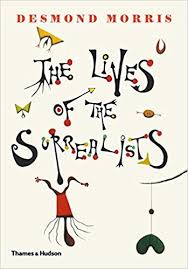 W
W Nothing, however, prepares one for the tender ferocity of Bacon’s isolated, entrapped figures. In the earliest of these, the large canvas of Figure in a Landscape(1945), a curled-up, almost human form appears to be submerged in a desert—we see his arm and part of his body, but the legs of his suit hang, empty, over a bench. This is masculinity destroyed. The sense of desperation is even stronger in Bacon’s paintings of animals, such as Dog (1952), in which the dog whirls like a dervish, absorbed in chasing its tail, while cars speed by on a palm-bordered freeway, or Study of a Baboon (1953), where the monkey flies and howls against the mesh of a fence. In their struggles, these animals are the fellows of Bacon’s “screaming popes”: in Study after Velazquez (1950), a businessman in a dark suit, jaws wrenched open in a silent yell, is trapped behind red bars that fall like a curtain of blood. The curators connect Bacon’s postwar angst with Giacometti’s elongated statues, isolated in space, and to the philosophy of existentialism. Yet Bacon’s vehement brushstrokes speak of energy and involvement, physical, not cerebral responses. In Study for Portrait II (after the Life Mask of William Blake) (1955), you feel the urgent vision behind the lidded eyes. He cares, passionately.
Nothing, however, prepares one for the tender ferocity of Bacon’s isolated, entrapped figures. In the earliest of these, the large canvas of Figure in a Landscape(1945), a curled-up, almost human form appears to be submerged in a desert—we see his arm and part of his body, but the legs of his suit hang, empty, over a bench. This is masculinity destroyed. The sense of desperation is even stronger in Bacon’s paintings of animals, such as Dog (1952), in which the dog whirls like a dervish, absorbed in chasing its tail, while cars speed by on a palm-bordered freeway, or Study of a Baboon (1953), where the monkey flies and howls against the mesh of a fence. In their struggles, these animals are the fellows of Bacon’s “screaming popes”: in Study after Velazquez (1950), a businessman in a dark suit, jaws wrenched open in a silent yell, is trapped behind red bars that fall like a curtain of blood. The curators connect Bacon’s postwar angst with Giacometti’s elongated statues, isolated in space, and to the philosophy of existentialism. Yet Bacon’s vehement brushstrokes speak of energy and involvement, physical, not cerebral responses. In Study for Portrait II (after the Life Mask of William Blake) (1955), you feel the urgent vision behind the lidded eyes. He cares, passionately. A small device implanted under the skin shows promise for improving breast cancer survival by catching cancer cells and slowing the development of metastatic tumors in other organs. These findings, based on experiments in mice and reported in the journal Cancer Research, suggest a path for identifying metastatic cancer early and intervening to improve outcomes. “This study shows that in the metastatic setting, early detection combined with a therapeutic intervention can improve outcomes. Early detection of a primary tumor is generally associated with improved outcomes. But that’s not necessarily been tested in metastatic cancer,” says study author Lonnie D. Shea, Ph.D., the William and Valerie Hall Department Chair of Biomedical Engineering at the University of Michigan.
A small device implanted under the skin shows promise for improving breast cancer survival by catching cancer cells and slowing the development of metastatic tumors in other organs. These findings, based on experiments in mice and reported in the journal Cancer Research, suggest a path for identifying metastatic cancer early and intervening to improve outcomes. “This study shows that in the metastatic setting, early detection combined with a therapeutic intervention can improve outcomes. Early detection of a primary tumor is generally associated with improved outcomes. But that’s not necessarily been tested in metastatic cancer,” says study author Lonnie D. Shea, Ph.D., the William and Valerie Hall Department Chair of Biomedical Engineering at the University of Michigan.